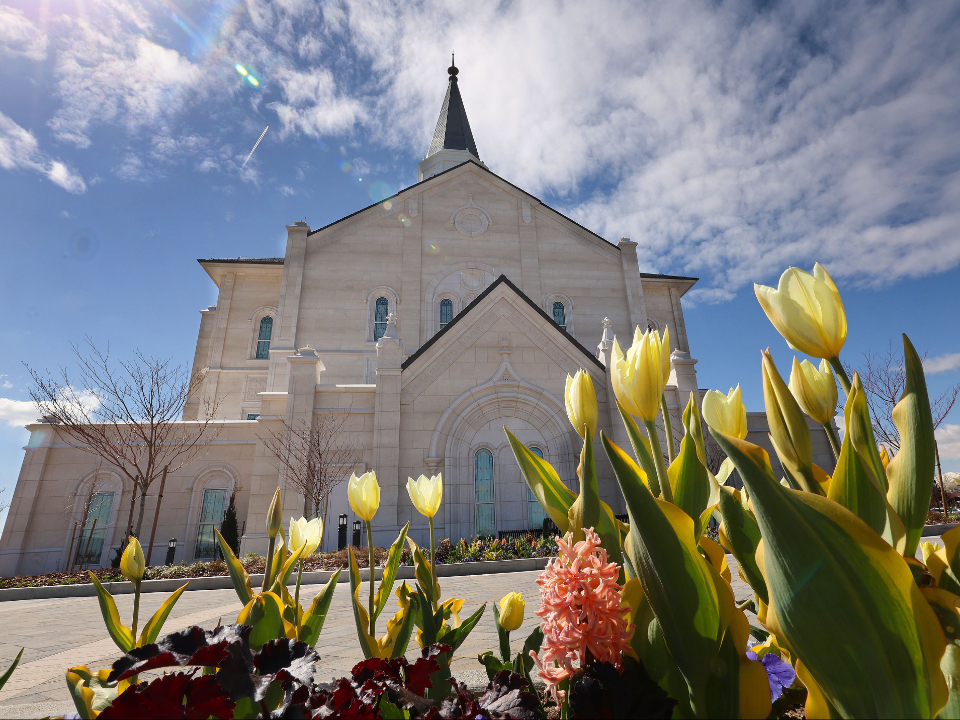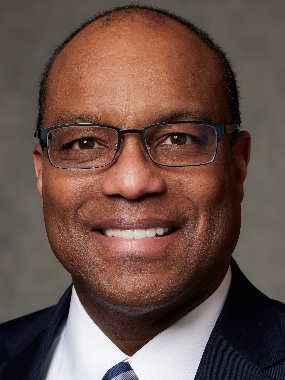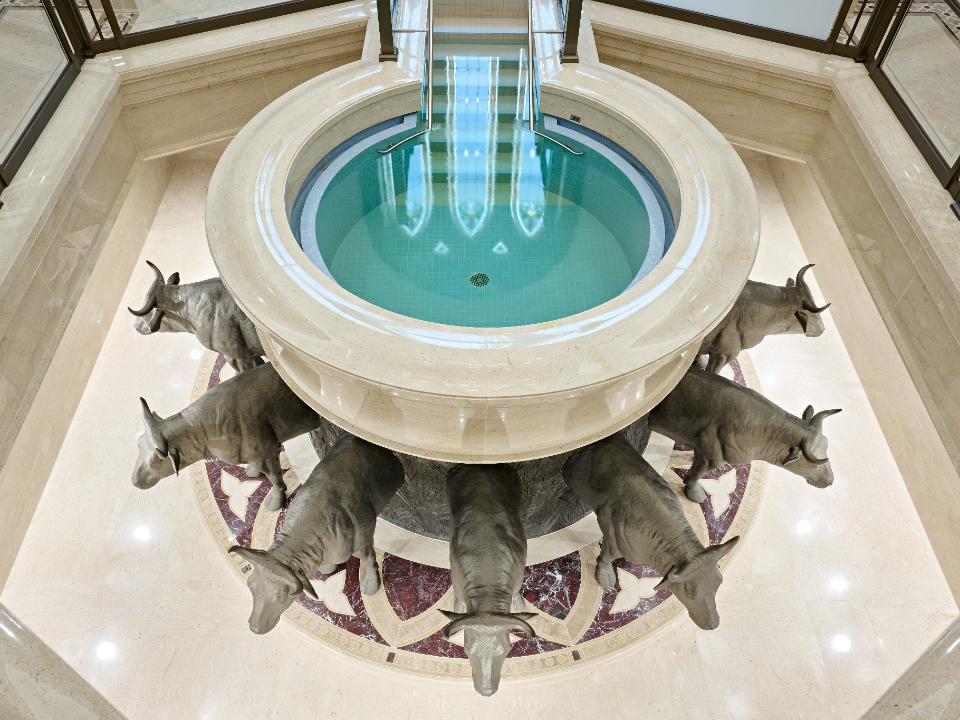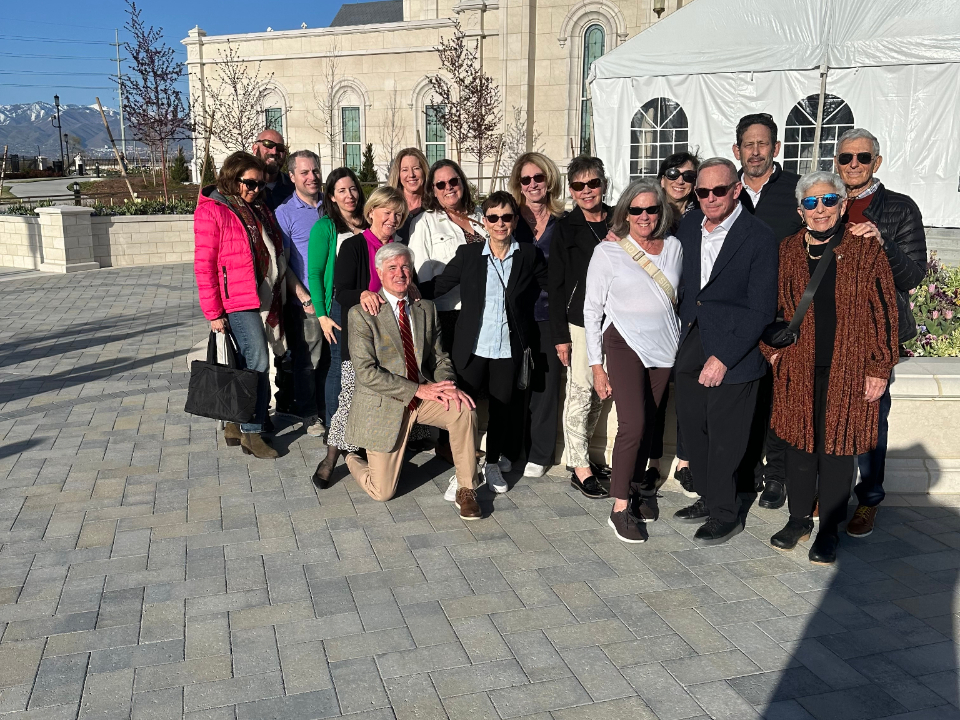
lds-jewish-temple-interfaith-1.jfif
The Taylorsville Utah Temple in Taylorsville on Tuesday, April 9, 2024. Photo by Jeffrey D. Allred, courtesy of Church News.Copyright 2024 Deseret News Publishing Company.This story appears here courtesy of TheChurchNews.com. It is not for use by other media.
By Trent Toone, Church News
Something described as “transcendent, spiritual, powerful and meaningful” happened as a group of Utah’s Jewish leaders and members of The Church of Jesus Christ of Latter-day Saints sat together in a sealing room at the end of a tour during the public open house of the Taylorsville Utah Temple on April 15.
They joined together in singing the words of Psalm 133 — in Hebrew — a rare occurrence in Latter-day Saint temples.
Elder Ahmad S. Corbitt, who led the tour, said what happened was “all very natural, it wasn’t planned.”
“It felt spiritual,” he said. “It was a powerful experience where Heavenly Father’s covenant people bridged a divide and came together in harmony, facilitated by the house of the Lord.”
The spine started to tingle and tears flowed, said Alex Shapiro, executive director of the United Jewish Federation of Utah.
“We all knew we had just been a part of a real special moment,” he said. “That was time together that none of us will ever forget.”

lds-jewish-temple-interfaith-2.jpg
Elder Ahmad S. Corbitt was sustained as a General Authority Seventy in the April 2023 general conference. 2024 by Intellectual Reserve, Inc. All rights reserved.Learning About the Jewish Faith
Years before his call as a General Authority Seventy, Elder Corbitt worked as a lawyer with other Jewish attorneys. He was also the point person for Jewish relations as the head of the Church’s Office of Public and International Affairs for a decade in New York City.
These experiences provided many opportunities for him to attend Shabbat services, bar mitzvahs, seders, sukkots, Pesach (or Passover), brises and dinners with his Jewish friends, where he learned some Hebrew and Yiddish and naturally came to love and respect their faith.
“Many of my mentors in my early practice of law were Jewish. They became my dear brothers. I became their brother, and we learned a lot about each other’s faiths,” he said. “Just being around Jewish friends and colleagues launched my knowledge of Hebrew, of Judaism, of Yiddish and as importantly, my affection for our Jewish brothers and sisters.”
Elder Corbitt was invited to lead the temple tour, which included Shapiro and 17 other Jewish leaders and friends from the Salt Lake area.
Shapiro, who has fond memories of playing basketball at Latter-day Saint meetinghouses, is a close friend of Rob Howell, a senior manager of interfaith relations for the Church. They are part of an interfaith group that meets for lunch about every six weeks, and Shapiro has attended several temple open houses in recent years. Howell and other Latter-day Saints involved in interfaith relations joined the Taylorsville temple open house tour.
Commonalities
The tour lasted more than two hours as those participating asked many questions. Their curiosity provided opportunities to highlight the commonalities of the two faiths, Elder Corbitt said.
“Everything in the house of the Lord, for us, points to Jesus Christ and our salvation through Him,” he said. “But we have in common many of the rituals and symbolism.”

lds-jewish-temple-interfaith-3.jpeg
The baptistry of the Taylorsville Utah Temple.2024 by Intellectual Reserve, Inc. All rights reserved.Described in 1 Kings 7:23-25, Isaiah 48:1 and 1 Nephi 20:1, the baptismal font atop 12 oxen is reminiscent of a mikvah, a small Jewish pool for ritual cleansing, “Not unlike how Latter-day Saints think of baptism,” Elder Corbitt said.
The initiatory ceremony in Latter-day Saint temples comes from Exodus 40:12-16, where people are instructed to wash, anoint and put on holy garments.
The instruction or endowment room is where Latter-day Saints can repeatedly learn and come to understand Heavenly Father’s plan of salvation, “of increasing from a fallen world to light, to more light, to through the veil of death and then ultimately into a very sacred space — the Celestial room — that represents His and Jesus’s holy presence,” Elder Corbitt said.

lds-jewish-temple-interfaith-4.jpeg
An instruction room in the Taylorsville Utah Temple.2024 by Intellectual Reserve, Inc. All rights reserved.‘Sit Together in Unity’
The tour ended in a sealing room, where someone remarked that it was nice to be sitting in the temple together. The comment reminded Elder Corbitt of Psalm 133.
In the King James version of Psalm 133:1, it reads, “Behold, how good and how pleasant it is for brethren to dwell together in unity.”
In some Hebrew interpretations, the same verse reads, “How good and how pleasant it is for brothers [and sisters] to sit together in unity,” Elder Corbitt said.

lds-jewish-temple-interfaith-5.jpg
Julie O’Leary, Lavine Shapiro, Dave O’Leary and Alex Shapiro pose for a photo outside the Taylorsville Utah Temple, which they toured together during the public open house on Monday, April 15, 2024. The O’Learys are Latter-day Saints with a calling to work with the interfaith community. Alex Shapiro is executive director of the United Jewish Federation of Utah. Photo provided by Jodie Sobel, courtesy of Church News.All rights reserved.Elder Corbitt recited the Psalm 133 in Hebrew, which surprised the group “in a real special way,” Shapiro said.
One member of the group then asked if Elder Corbitt could sing it.
Psalm 133 is often sung by Jews when they gather for Sabbath services or when members of the community come together for a special event, Shapiro said.
“Without breaking stride, he immediately broke into those words in song, to which the entire room immediately joined him,” the Jewish leader said of the emotional, powerful moment.
“It was [a feeling of] community. It was friendship. It was an overpowering feeling of trust and respect. It made it perfectly simple to join together,” said Shapiro, whose twin sons are rare fourth-generation Jewish Utahns. “It’s been a turbulent six to seven months for the Jewish community. When we can find stories like this, that gives us hope, that gives us the opportunity to be positive about better days to come. Being friends and allies is important. I think that’s what this experience illustrates.”
For Elder Corbitt, Psalm 133 is a “soothing, beautiful, harmonious song that draws everyone together.”
“It seems like the melody, pitches and tone are commensurate with the verbal message. You just feel unified when you sing that song,” he said. “The gospel of Jesus Christ can unite people of different races and nationalities. We saw that on display there in the house of the Lord. It was the gospel of Jesus Christ that enabled me to learn about Judaism and Hebrew. That wouldn’t have come in any other way. The restored gospel opens our eyes to the reality that we are all children of God and therefore brothers and sisters.”
Elder Corbitt continued: “Another thing I take away is how significant the house of the Lord was in unifying someone with a Muslim name and his Jewish brothers and sisters. As a disciple of Jesus Christ, I see clearly how Jews, Muslims and Christians all partake in the covenant God made with Abraham.”

lds-jewish-temple-interfaith-6.jpg
A United Jewish Federation of Utah tour group poses outside the Taylorsville Utah Temple on Monday, April 15, 2024. The group sang Psalm 133 in Hebrew with Latter-day Saint friends at the end of the tour. Photo provided by Jodie Sobel, courtesy of Church News.All rights reserved.Copyright 2024 Deseret News Publishing Company.